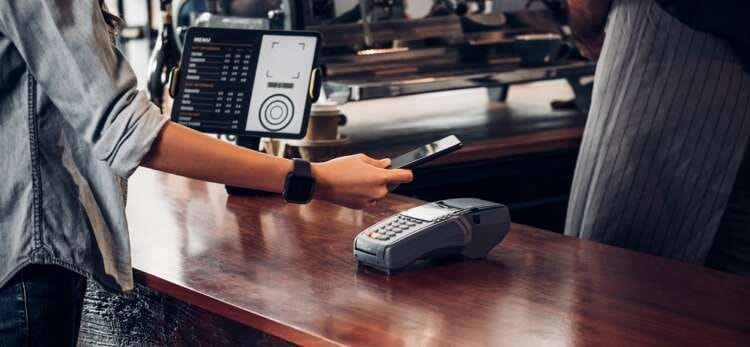
By Simon England, Managing Director, Equals Money
As a result of the pandemic, the prospect of a cashless society seems more realistic than ever.
The UK especially has seen cashless payments take preference and prompted the payments sector to explore and implement new, innovative technologies sooner than planned. Mobile wallets, pre order apps and spending cards have all seen a sharp increase in usage.
The race amongst tech firms to present the “next big thing” in payments technology is on. But with the number of consumers choosing to pay cash dwindling year-on-year, SME leaders also need to consider the balance of cash versus cashless in their business.
The state of customer-facing cash
There are certainly downsides when it comes to using cash for your business – specifically how it severely limits a business’s ability to maintain real-time visibility over its finances. However, cash also comes with more immediate risks: theft, disease transmission, and increased human error to name a few. These risks, combined with the trend towards cashless payments, are causing many businesses to prioritise electronic payments.
However, cash has yet to disappear completely. A frequent hurdle for SMEs in becoming cashless is the 2–4% interchange fee which can actually cause smaller businesses to lose money on sales. There is a silver lining though: contactless fees tend to be lower than chip and pin, so it’s safe to assume that going cashless is now more affordable than it
Another consideration for cash is that a small number of businesses i.e., microbusinesses still lack the necessary infrastructure to go completely cashless. That being said, the cashless payments processing market has reached a stage where straightforward, affordable payment solutions are available to most if not all businesses who want them.
The bottom line is that more and more consumers are opting for electronic payments, meaning that businesses will need to adapt to the new reality that is cashless. But, to ensure financial success, they must chart their own course through this new world of electronic transactions.
Accepting payments, whatever form they take
Nowadays, most of us have the necessary resources to go cashless and, currently, only one in six payments in the UK is made with cash. There are significant security and data benefits to card payments too; they make it possible for business leaders to keep track of where the money is going in real-time. Importantly, the laborious task of “cashing up,” along with all risks and training involved, is removed.
That notwithstanding, we can’t write off cash just yet, a significant number of transactions still make use of it. Going completely cashless may even drive customers away, so the best bet for businesses right now would be to accept both cash and cashless payments. However, businesses should also make every effort to promote cashless as the payment method of choice.
It’s important to emphasise that a 50-50 spilt isn’t the goal here. Yes, consumers clearly prefer cashless – and this should be the focus – but businesses should also maintain a limited cash capability to ensure visibility over transactions but also reducing certain risks that come with cash being kept on the premises such as theft.
Internally, cash is over
It is certainly the case that cash payments will stick around, but business payments are a different story. SMEs have strong incentives to transition away from cash-based expenses modes to a cashless alternative
Managing expenses is currently fraught with inefficiencies. For one, it’s common for employees to have to pay for business purchases themselves, keep receipts and – in many cases but certainly not all – be reimbursed. Not only is this process prone to human error on both sides, it also severely hampers the ability of businesses to keep track of what is being spent.
When it comes to smaller employee purchases, many businesses tend to keep a petty cash jar on hand. While it certainly seems like an easy “right on hand” option, this approach forgoes accountability. Furthermore, no matter if spent appropriately or not, petty cash causes significant accounting issues.
To spare this uncertainty and the labour of handwriting expense forms, businesses should embrace modern spending management solutions; they provide all the benefits of going cashless, whilst greatly improving both accountability and quality of life for business owners, accountants and employees.
Chief amongst these benefits is visibility. Businesses can monitor the budget allocated to a given card, keep track of payments, as well as control what the cardholder can buy. The upshot for employees is that they don’t have to spend their own money and hope to be reimbursed – rather, they enjoy a hassle-free way to keep track of expenses and, crucially, receipts.
Cashless remains the future – we’re just not quite there yet
When it comes to accepting transactions, it is clear that cash remains widely used. Fortunately, it’s easy for cash and cashless to coexist, enabling businesses to be cost-effective and acquire the largest possible customer base
However, in the ever-changing world of payment options, SMEs would do well to stay ahead of the curve in terms of tech and spending solutions. To make payments and business transactions, cashless is better not only for the reasons stated above but also for overall business growth.


